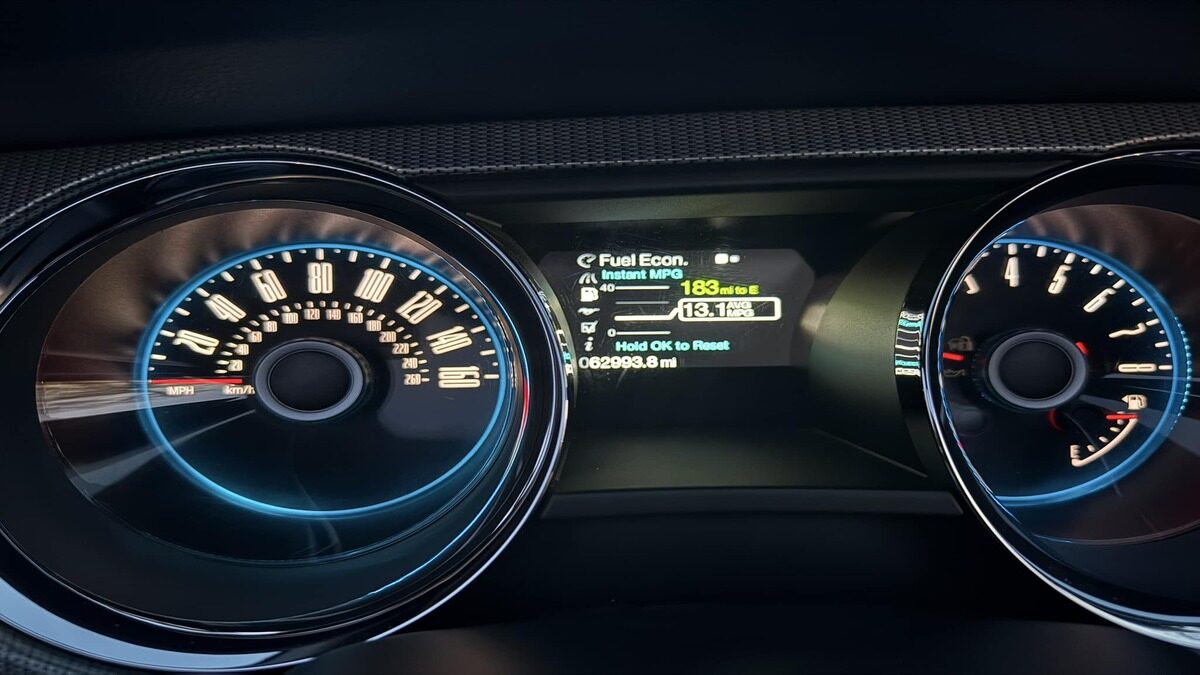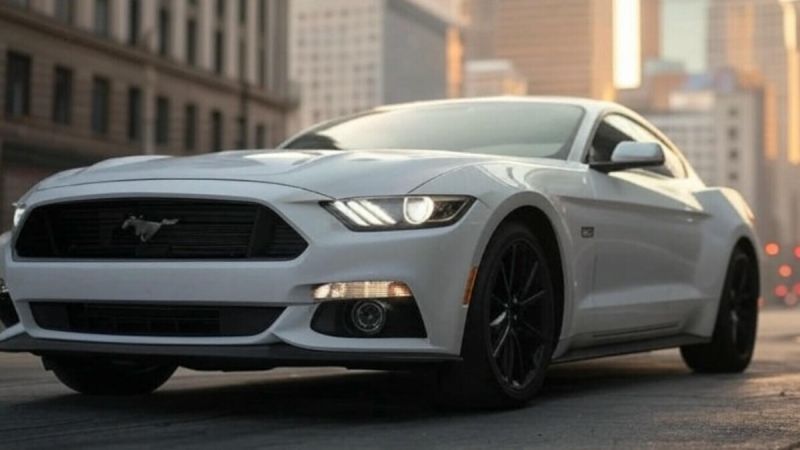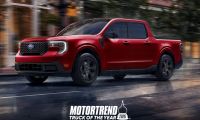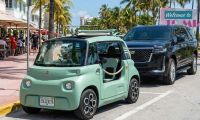For years, range anxiety has been one of the most common buzzwords in the electric car community. This alludes to the fear of running out of battery charge before accessing a charging station or reaching your destination. However, as technology improves, range anxiety is taking on a new meaning, at least for John Militello from the Mustang Mach E owner's Facebook group. John bought his first EV in 2024 but now has a Kia EV9 and a used Tesla Model 3.
Recently, he took his gas-powered ICE Ford Mustang GT 5.0 V8 from the garage and recorded the expected range after filling the tank. To his horror, he could not believe it would only last him 183 miles before having to fill up again. In the post, he stated,
"I was obsessed with range when I first bought an EV last year—I have two now. Even though I have a level two home charger, I was worried about more extended trips. My KIA EV9 can get over 300 miles of range on a full charge, and my used Tesla Model 3 AWD gets 276 miles on a full charge.
Two days ago, I took my gas-powered ICE Mustang GT 5.0 V8 out of the garage for the first time in four months. The photo posted is the expected range after filling the tank! Talk about range anxiety! I could not believe my eyes at well over three dollars a gallon for premium fuel, to boot. And 13 MPG! Now, mind you, on long trips, the car gets 24 miles to the gallon. I would freak out if I saw 183 miles of range on a 100% charge on one of my EVs. Even on the coldest days this winter, if one of my EVs had this low range!
During the six months of driving EVs, I found no real issues while traveling long distances. Charging stations are available and more plentiful than I thought. At the same time, it may take 20 minutes to go from 10% to 80% charge and sometimes another 20 or 30 minutes waiting for a charging station to free up, so some of my trips were a little longer. The bottom line is that long-distance travel has not been an issue for us. In and around town, EVs are fantastic, and they save money."
That said, it is important to note that Militello’s Mustang 5.0-liter V8 is not the typical vehicle, considering the large engine and low fuel economy. Many gas-powered cars can offer better fuel economy due to smaller engine capacities and modern engineering. He may not have had the same anxiety if he had owned a crossover with a 1.5-liter engine, for example.
The significant contrast shows a key advantage of electric vehicle efficiency. Electric motors convert over 85% of electric energy into motion as opposed to internal combustion engines, which are only about 30 % efficient. On paper, EVs can travel farther with less energy, saving the drivers money. John, for example, also has a charging setup at home, so charging his vehicles costs significantly less than filling a gas tank, especially with increasing gas prices.
It was not always the case, though. Range anxiety was a legitimate issue when the first mass-market electric vehicles hit the road. The earliest EVs, like the Nissan Leaf, could only do 80 miles on a clear day. Years later, the newer options, like John’s EV9, can cover 304 miles on a single charge. The Model 3 will also give 276 miles.
John’s post addresses the concern of the EV’s suitability for long-distance travel, noting that while the charging stops may add time to the trip, they have not been a significant issue. Fast chargers can replenish the electric vehicle’s battery from 10 to 10% in sub 20 minutes. Despite these problems, he found that long-distance travel in either of his EVs was quite manageable. The growing prevalence of fast chargers also means less time is spent waiting for it to become fully charged. While internal combustion cars are still ahead in refueling speed, the gap is gradually closing with improving technology.
Cold Weather Performance, Considering the Kia EV9 and Tesla Model 3 vs. the Ford Mustang GT
One of the most surprising things about Johns experience is how well the EV9 and Model 3 faired in cold weather compared to the GT. Winter temperatures may reduce battery efficiency and associated range for EVS. However, John’s post illustrated that even on the coldest days, the range of his vehicles did not drop below the level of his Mustang’s 183 mile full tank range. Modern electric vehicles are apparently designed with thermal management systems to mitigate cold temperatures. Preconditioning also lets the driver warm the battery while the vehicle is still plugged in. Cold weather may affect range, but it is no longer the deal breaker it was previously.

The Psychological Shift from a Cherished Gas Powered Ford Mustang to a Kia EV9
Perhaps the most interesting part of John’s post is the psychological shift it represented. A driver who previously cherished his internal combustion limited-edition Mustang and obsessed over their electric vehicles' range now had reservations about using the former. The costs associated with the Mustang, which were taken for granted, are now too obvious to ignore. This change also reflects a bigger trend among EV owners who find it harder to go back to gas-powered vehicles after experiencing the advantages of electric vehicles.
This change in thinking is part of why more people are adopting EVs. In the post's comment section, Hondo Khadi, another group member, indicated that the “Mustang had the same range as a normal sports car or small economy car with a 13-gallon tank.” The story is a microcosm of the bigger transition towards electric vehicles. As the technology continues to improve, range anxiety will become nonexistent. Battery technology and charging infrastructure improvements will make EVs more practical than they previously were. Similarly, the inefficiency of their predecessors will become even harder to ignore.
Now let me know please. Is range anxiety still an issue for you when considering an electric vehicle? Has that been shifted over the past years? Please write your opinion in the comments section below and join the discussion (or be the first to start the comment).
Image source: Grok AI and Mustang Mach-E Owners Facebook Group.
Nicholas Muhoro is an automotive journalist covering car news and has a decade of experience sharing working at HotCars and TopSpeed. You can follow Nicholas on X and on LinkedIn to stay in touch and follow his news coverage at Torque News.












Comments
I believe the first mistake…
Permalink
I believe the first mistake this car owner did was getting a mustang model that is not fuel efficient...with Mustang GT it is targeted towards people who enjoy the rides, so fuel efficiency should have been the last thing on their minds. Plenty of gas vehicles out there like camry and accord have wayyy better range. So it's always a good idea to do research to make sure the car is really what you want to get before getting stuck into financing.
Sounds like an out of touch…
Permalink
In reply to I believe the first mistake… by Nyankana (not verified)
Sounds like an out of touch coastal asshole. My 5.0 liter sports car has bad range?! oh NO whatever will I do. What a douche. My sports car only gets so much range on a tank, not as good as my Tesla which I own because I'm rich.
There's a reason EV owners are considered douchebags. There's a good example right there.
Doesnt matter. Youre in one…
Permalink
Doesnt matter. Youre in one for the ride. You're in the other to get from point a to point b and when you need gas it takes 5min to fill up
The gasoline refilling…
Permalink
The gasoline refilling network is a lot more robust than the electric refilling network. Biden committed funds to build out EV stations and Trump cancelled it because he hates Biden.
If it works for some people,…
Permalink
If it works for some people, then great. But range isn't even a concern if I can refill in 5 minutes and be on my way. It isn't the range, its the inconvenience of charging up. And yes, I do 400+ miles in the middle of the night with only a 5 minute fill up and restroom break. Travelling to and from amusement parks leaving early in the morning on a Saturday, and back home by Sunday morning. 27 hours straight. I'd have to add at least another 45 minutes to an hour to make the trip. Also, until real transmissions start going into evs I have no real desire to drive one. It's just be an appliance. #1 item when buying a car is a manual transmission.
What kind of driving?....my…
Permalink
In reply to If it works for some people,… by Matthew Tackett (not verified)
What kind of driving?....my 15 mustang gt gets close to 300 miles on every tank...80% freeway....this whole article sounds contrived.
What a clown article. First,…
Permalink
What a clown article. First, he owns a Kia, ya, real car guy. 🤣🤣🤣🤣 Second it's not about range, of course a Kia will get more than a V8 Mustang(which I'm sure this clown doesn't even know how to drive). How long does it take to get full range back in that turd Kia or Tesla? 5 minutes max to fill the Mustang.